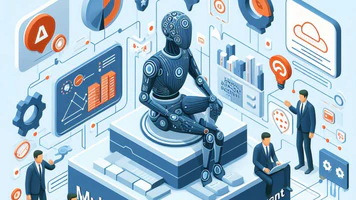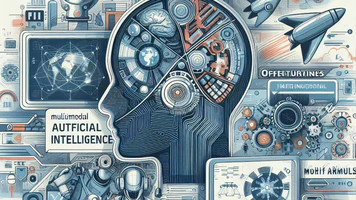
- By Justin Riddiough
- December 9, 2023
While the potential of multimodal models is undeniable, their development and application face several challenges. Let’s delve into these hurdles and explore promising solutions for building robust and reliable models.
Dataset Challenges and the Power of Accurate Annotation**
Building a good multimodal model starts with a good dataset. However, creating diverse and high-quality multimodal datasets presents several challenges:
- Data Availability: Obtaining sufficient data across multiple modalities can be difficult and expensive.
- Data Skew: Certain modalities might be overrepresented in the data, leading to biased models.
- Annotation Cost and Difficulty: Labeling multimodal data accurately requires expertise and time, making it a costly process.
“Garbage in, garbage out” certainly applies to multimodal models. High-quality datasets are the foundation for success.
Solutions for effective dataset management include:
- Data Augmentation: Techniques like image cropping and flipping can artificially increase the size and diversity of data.
- Active Learning: Selectively query human annotators for labels on the most informative data points, minimizing annotation costs.
- Transfer Learning: Leverage pre-trained models on different modalities to extract valuable features and knowledge.
Training Challenges and Finding the Right Metrics
Training multimodal models also presents its own set of challenges:
- Balancing Modalities: Models can become biased towards modalities with more data or stronger features.
- Joint Representation Learning: Efficiently capturing the relationships between different modalities can be computationally expensive.
- Evaluation Metrics: Measuring the performance of multimodal models requires specialized metrics tailored to the specific task.
Training a multimodal model is like juggling chainsaws – it requires careful balancing and precise control.
Here are some solutions to address these training challenges:
- Multimodal Attention Mechanisms: These mechanisms enable the model to dynamically focus on relevant parts of each modality, leading to improved training efficiency and performance.
- Regularization Techniques: Techniques like L1 and L2 regularization can help prevent overfitting and improve modelgeneralizability.
- Task-Specific Evaluation Metrics: Developing metrics that specifically measure the desired capabilities of the model is crucial for accurate evaluation.
Building a Future of Reliable Multimodal Understanding
While challenges exist, the field of multimodal modeling is rapidly evolving. By addressing dataset challenges, implementing effective training techniques, and utilizing appropriate evaluation metrics, we can push the boundaries of what multimodal models can achieve. As we move forward, these models have the potential to revolutionize various fields, leading to a future where machines can understand and interact with the world in a way that is both intelligent and comprehensive.


